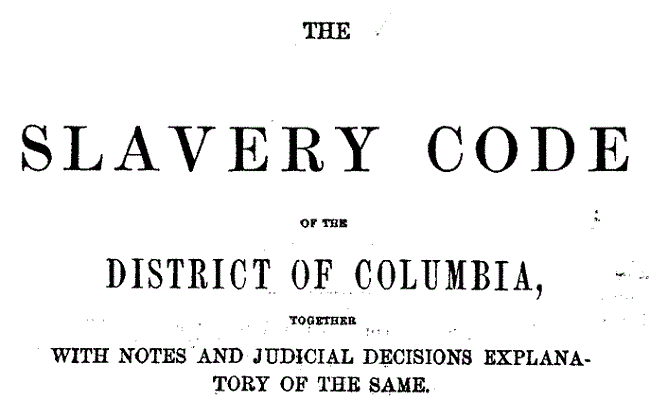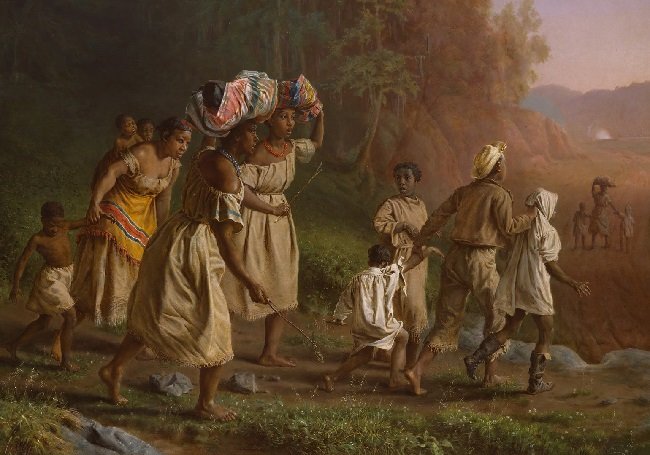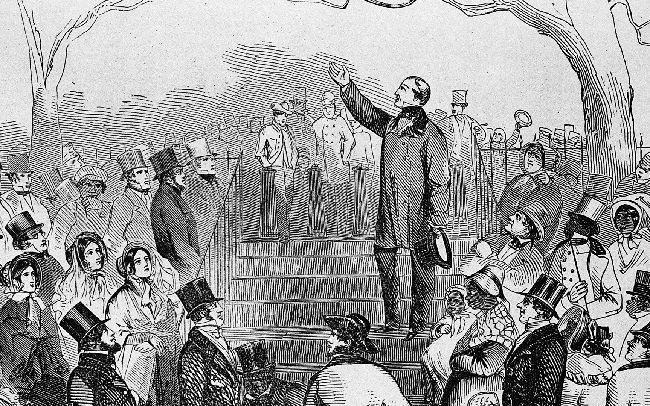The transatlantic slave trade is a dark and horrific chapter in American history. Here are 15 shocking facts about the slave trade

Duration
The transatlantic slave trade involving North America lasted for over 200 years, from the early 17th century until the end of the American Civil War in 1865.
Scale
Approximately 12.5 million Africans were forcibly transported across the Atlantic Ocean as slaves, with estimates suggesting that around 400,000 of them were brought directly to North America.
Middle Passage
The journey from Africa to the Americas was known as the Middle Passage. It was an extremely brutal and deadly voyage, with estimates suggesting that around 2 million slaves died during the journey due to inhumane conditions and mistreatment.
Auctions
Upon arrival in America, slaves were sold at public auctions. Families were often separated, with heartbreaking consequences. The enslaved people were viewed as property and treated as such.
Economic Foundation
Slavery played a vital role in the economic development of the United States, particularly in the southern states. The labor of enslaved Africans contributed significantly to the wealth generated by industries such as agriculture, cotton production, and mining.

Slave Codes
As slavery became more entrenched, a series of laws known as slave codes were enacted to control the enslaved population. These codes severely restricted their rights and enforced a system of oppression.
See also: 13 Worst Cases of People Being Wrongfully Accused in US History

Underground Railroad
The Underground Railroad was a network of secret routes and safe houses used by enslaved people to escape to free states and Canada. Harriet Tubman, a former slave, became one of the most famous conductors of the Underground Railroad.

Abolitionist Movement
The slave trade faced strong opposition from abolitionists, who campaigned for the abolition of slavery. Prominent figures like Frederick Douglass, Sojourner Truth, and Harriet Beecher Stowe played key roles in raising awareness and advocating for change.
You may also like: 10 Vicious Acts of Revenge in American History

Fugitive Slave Act
In 1850, the Fugitive Slave Act was passed, which required citizens to assist in the capture and return of escaped slaves. This law further intensified the divide between the Northern and Southern states and increased tensions leading up to the Civil War.
Slave Rebellions
Throughout history, enslaved people resisted their bondage through acts of rebellion. Notable slave uprisings include the Stono Rebellion in South Carolina in 1739 and the Nat Turner Rebellion in Virginia in 1831.
Domestic Slave Trade
In addition to the transatlantic slave trade, a thriving domestic slave trade developed within the United States. Enslaved people were bought and sold within the country, often being forcibly relocated to different regions.
Slavery & Constitution
The U.S. Constitution initially protected the institution of slavery. The Three-Fifths Compromise, for instance, counted slaves as three-fifths of a person for the purposes of representation in Congress.
Slave Resistance
Enslaved individuals engaged in various forms of resistance, from small acts of defiance to organized rebellions. These acts included sabotage, feigning illness, practicing cultural traditions in secret, and maintaining a sense of community and identity.
Long-term Impact
The legacy of slavery and the slave trade still reverberates through American society. It has had a lasting impact on issues such as systemic racism, economic disparities, and social inequality.
Emancipation Proclamation
On January 1, 1863, President Abraham Lincoln issued the Emancipation Proclamation, declaring that all slaves in Confederate-held territory were to be set free. This proclamation laid the foundation for the eventual abolition of slavery in the United States.
See also: 14 Famous Death Penalties of US History

Additional Brief information
- The average life expectancy for an enslaved African was just 25 years.
- The slave trade was a horrific and inhumane practice that involved the forced transportation and enslavement of millions of Africans.
- The transatlantic slave trade was the largest forced migration in human history.
- The slave trade had a devastating impact on Africa, both economically and socially.
- The slave trade was a major driver of the American economy, and it helped to build the wealth of many American families.
- The abolition of slavery was a long and bloody struggle, and it was not until the Civil War that slavery was finally abolished in the United States.
- The legacy of slavery continues to this day, and African Americans continue to face discrimination and racism in the United States.
- The slave trade began in the 16th century and lasted for over 300 years.
- During this time, an estimated 12.5 million Africans were forcibly transported across the Atlantic Ocean.
- The vast majority of these Africans were enslaved and forced to work on plantations in the Americas.
- The slave trade was a major source of labor for the Americas, and it helped to fuel the growth of the economies of these regions.
- The slave trade was a brutal and dehumanizing system, and it had a devastating impact on the lives of millions of Africans.
- The abolition of slavery was a major victory for human rights, but the legacy of slavery continues to this day.
These facts shed light on the brutality and profound impact of the slave trade on American history. It is crucial to remember and learn from this dark period to foster understanding, empathy, and progress toward a more just society.